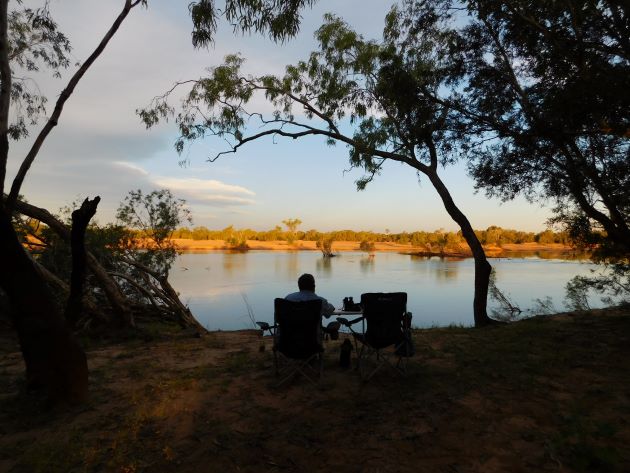
Following the devastating floods, causing significant damage to the highways across the north of Australia in December 2022 and January 2023, we knew it would be several months before we could return to the banks of the Fitzroy River at Langi Crossing. Even now the gravel track in to the Fitzroy River has some deep muddy puddles to go through in four-wheel drive. Now the temperature has dropped to below 20c overnight the water needs to evaporate, but it is also advantageous to the birdlife along the track.
When we drove in to Langi Crossing for the first time this year we did not know what would remain after the floods. We had expected some serious erosion and that had occurred, but the place we like to camp was still partially available for our use. The cliff is still a very steep drop off, so you feel safe from the fresh and saltwater crocodiles, but the area where you can sit is a lot smaller. The very large tree is now teetering on the edge of the bank and unlikely to last another wet season later in the year. The Fitzroy River is still very high and will take some time to drop. You will see how different it is this year to last year here.
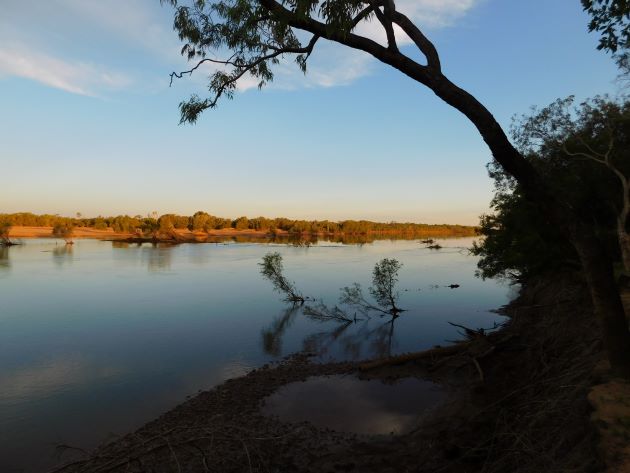
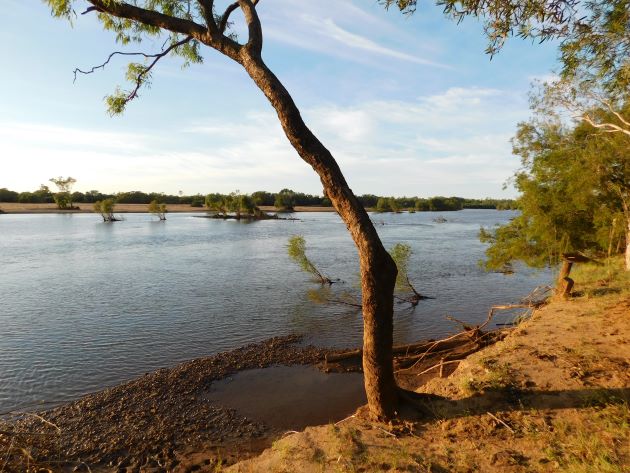
Langi Crossing after the floods
The crocodiles were not particularly visible with the cooler weather, but their marks in the mud were and a few sunbathed on the far side of the river.
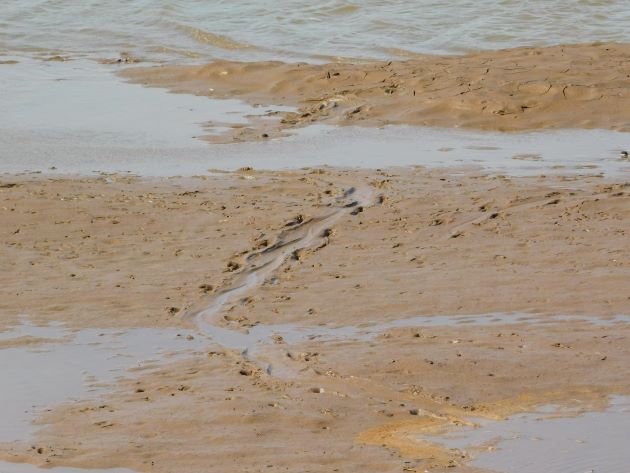
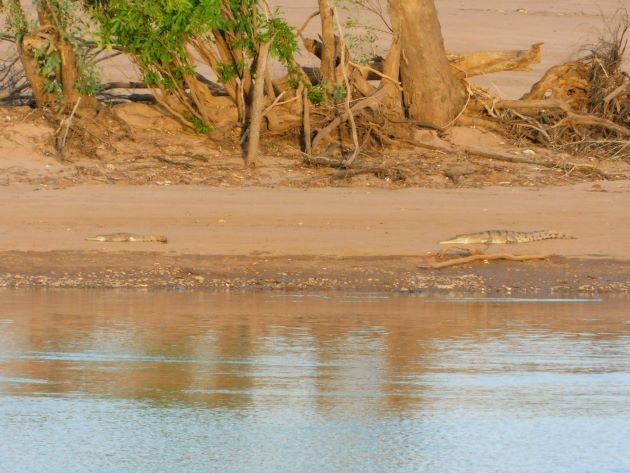
Freshwater crocodiles and track
Despite all of the changes over the past few months the birdlife appears just as it has other years. The resilience of the birds is incredible and many birds are still nesting. There are often a pair of White-bellied Sea-Eagles present and they were there. One was lying on a huge nest on the far side of the river and Budgerigars were constantly landing on the branches above the nest.
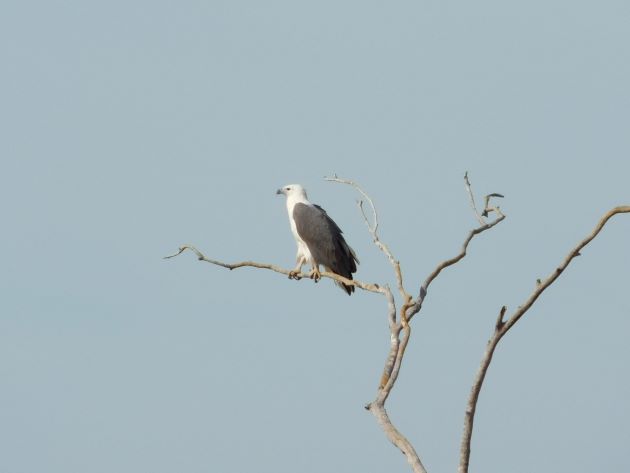
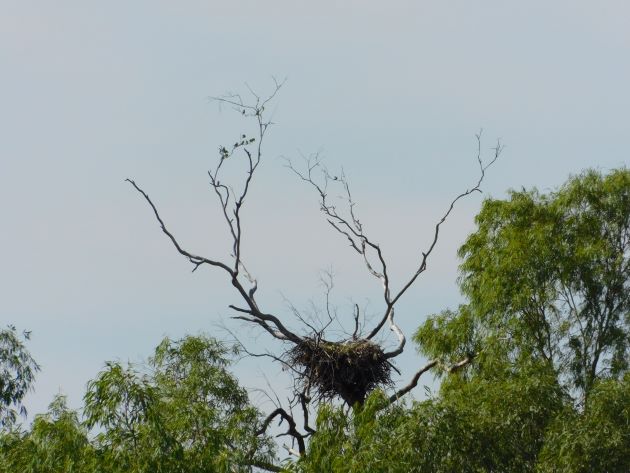
White-bellied Sea-Eagle nest with Budgerigars above
There were numerous Whistling Kites sitting in nests and we were intrigued to see that Zebra Finch had built their own nests in the base of the nest. One Whistling Kite nest had five Zebra Finch nests in the underside of the big nest. That is quite a clever strategy whether it keeps you dry or safe or both!
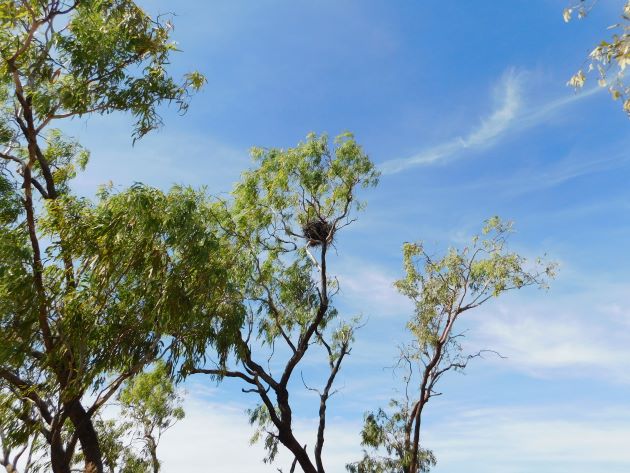
Whistling Kite nest
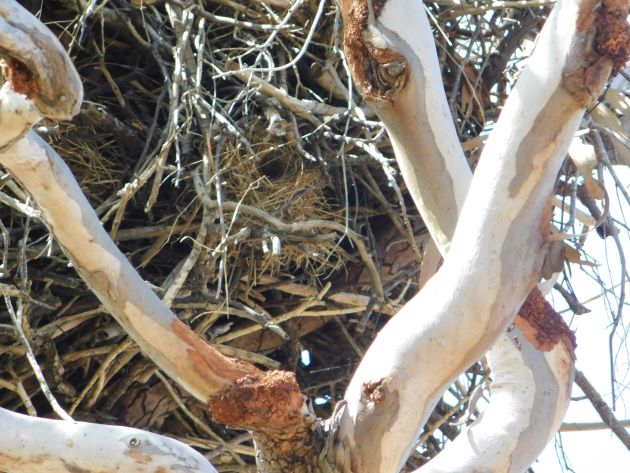
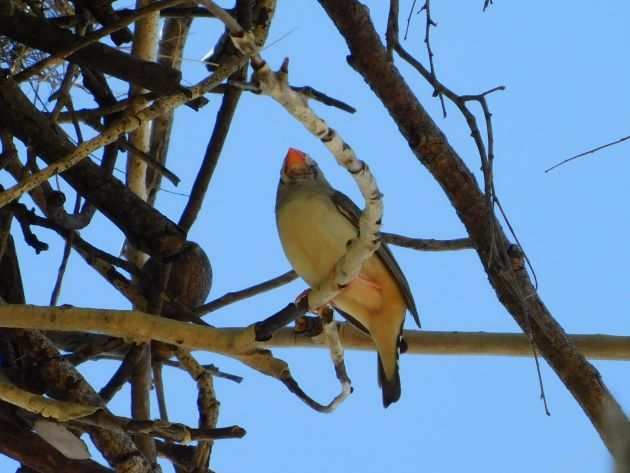
Zebra Finch nest under a Whistling Kite nest
After all of the rainfall the Boab trees look spectacular and there are some magnificent specimens in the area. It is always worth looking to see what birds are hiding in the foliage.
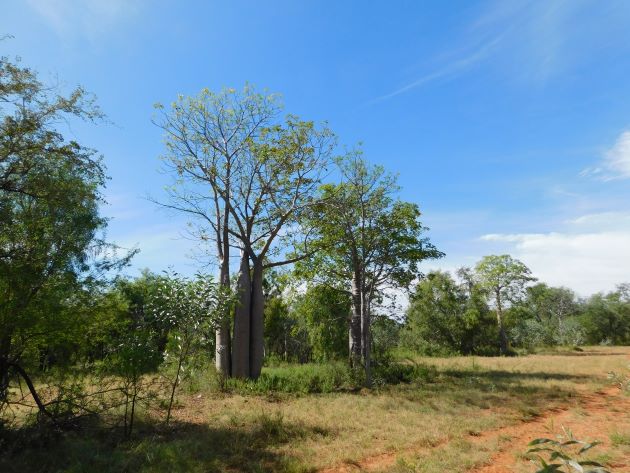
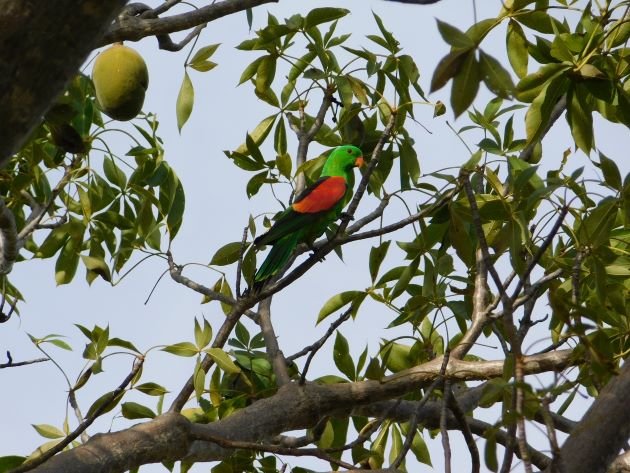
Red-winged Parrot hiding in a Boab tree
We were able to spend 24 hours on the banks of the Fitzroy River at Langi Crossing and we were able to go bushwalking both up and downstream from where we camp. There were over seventy bird species observed during this period and a few noisy night-time species too. Bush Stone-curlews are always noisy when we camp there and leave their footprints in the tracks, so we can find out where they walked the next day!
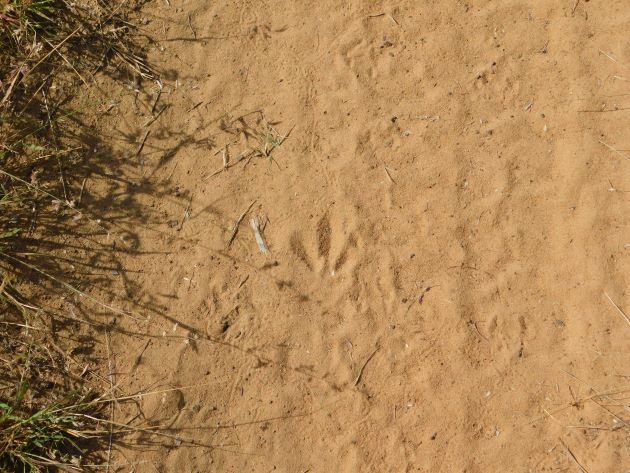
Bush Stone-curlew track
There are many birds that feed on the edge of the river regardless of the crocodiles and many birds that fly back and forth from one side to the other. You can easily relax on the clifftop watching the world go by for hours on end and watch the sun rise and fall and the moon rise and fall over a day!
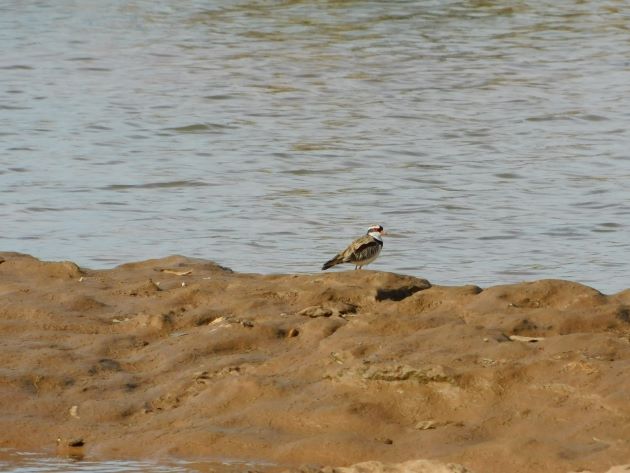
Black-fronted Dotterel
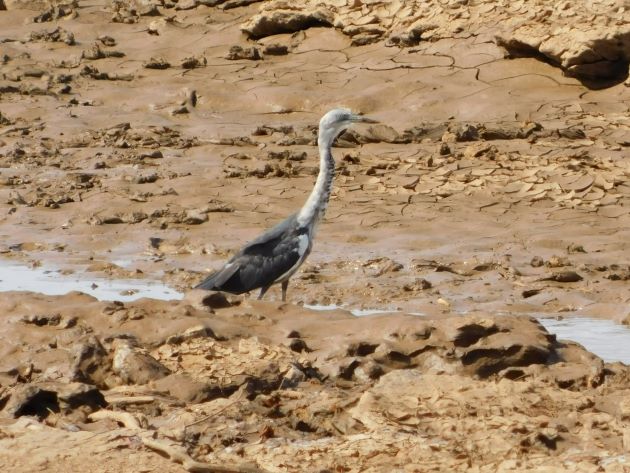
White-necked Heron
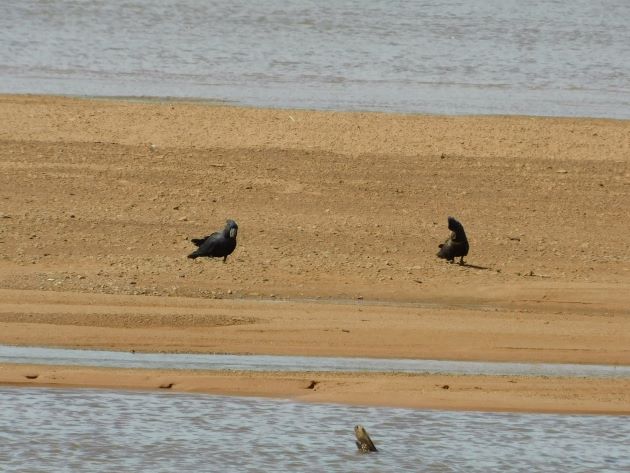
Red-tailed Black Cockatoos in for a drink
The Torresian Crows were present as always and the Varied Sittellas that visit our camp. The tiniest little bird, the Weebill, was flitting amongst the trees too, but wasn’t ready to give me a full frontal photo!
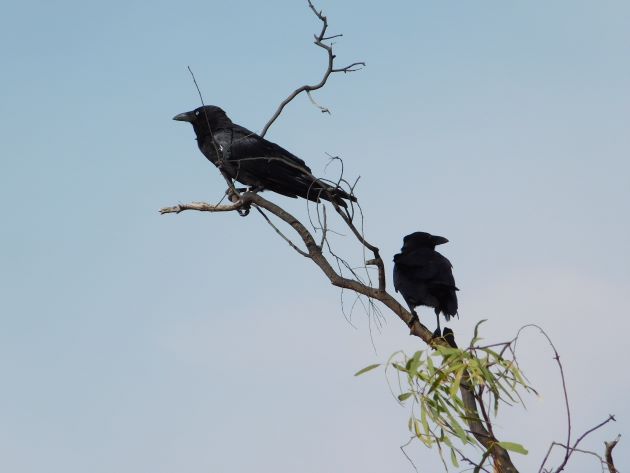
Torresian Crows
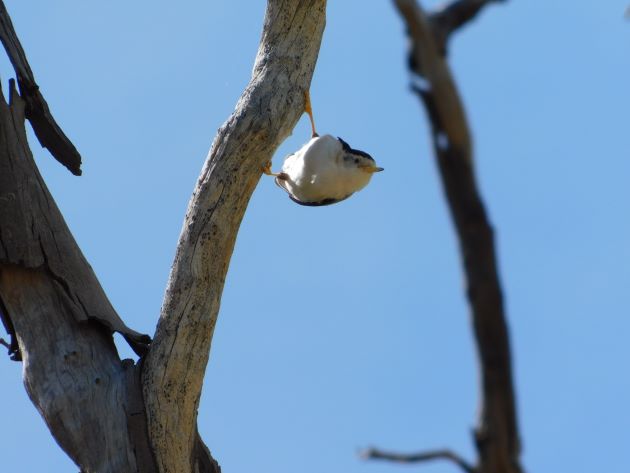
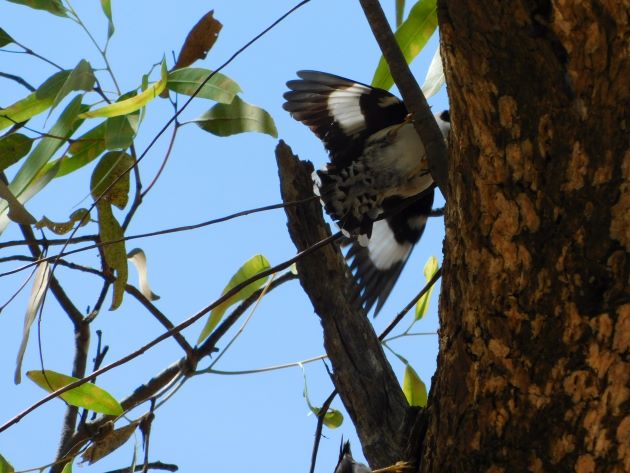
Varied Sittella…not a big butterfly!
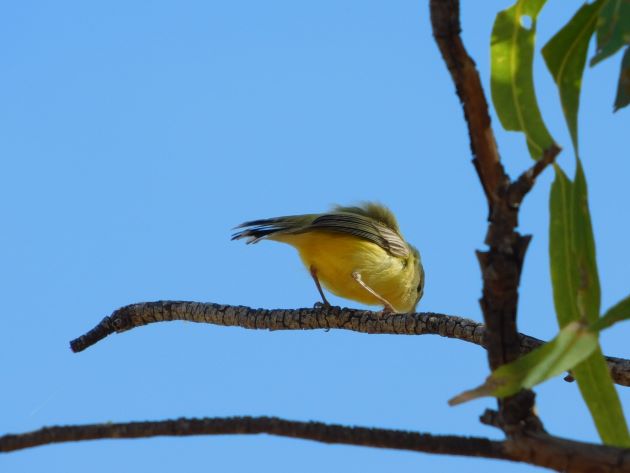
Weebill
One stand out difference this year was the invasion of an environmental weed called Noogooru Burr. Sadly it has completely taken over much of the banks of the river after so much flooding and it is likely to continue to spread through the remote area.
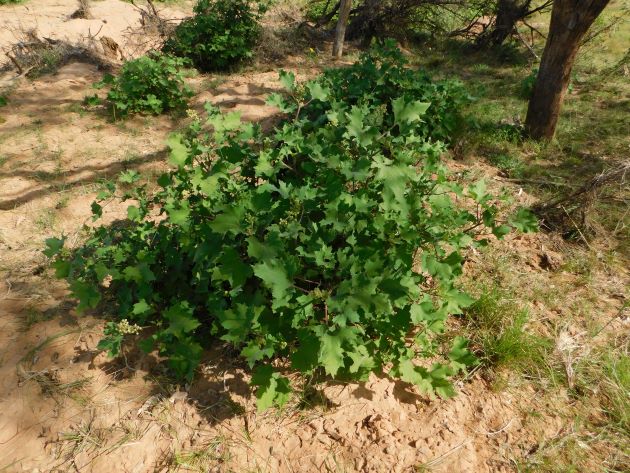
Noogooru Burr weed
We are aware of the Cane Toads getting very close to Broome now and it has been seen in Derby since the floods. We expect to see a sharp decline in Goanna numbers once they do arrive, but for now you can still stumble across them when you are bush-walking. Unfortunately the Goannas first defence is to go flat in the hope of not being seen, which in my case meant I may well have almost stood on it and we both had a rise in blood pressure! I couldn’t have been too scary, because it allowed me to photograph it from quite close quarters and you can clearly see the inspiration for “dot paintings”.
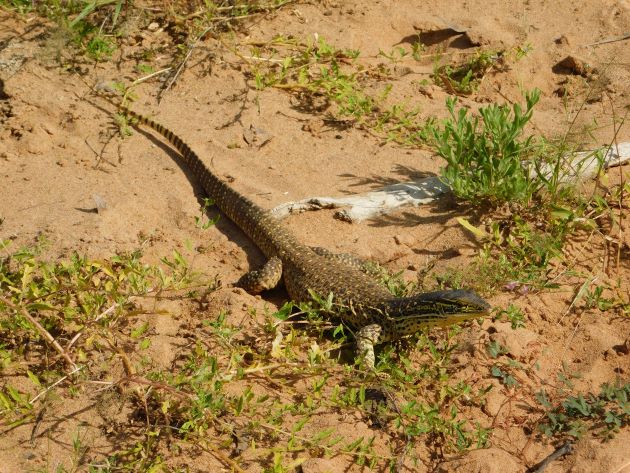
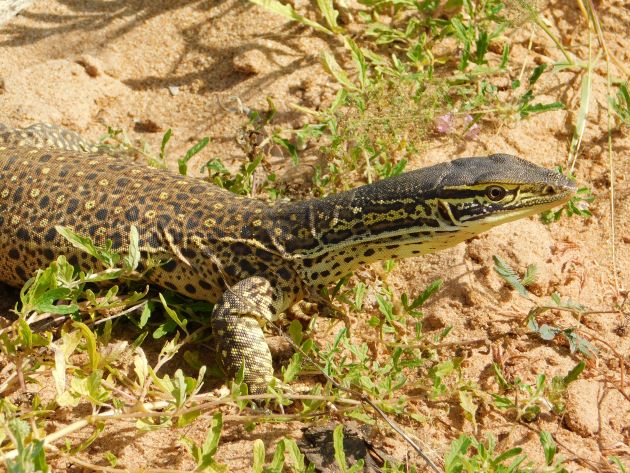
Goanna
Although there had been many changes over the wet months there were also many familiar birds on this visit. Every visit to Langi Crossing is different when you can get there and we hope to make some more visits before it rains again at the end of the year.













Leave a Comment